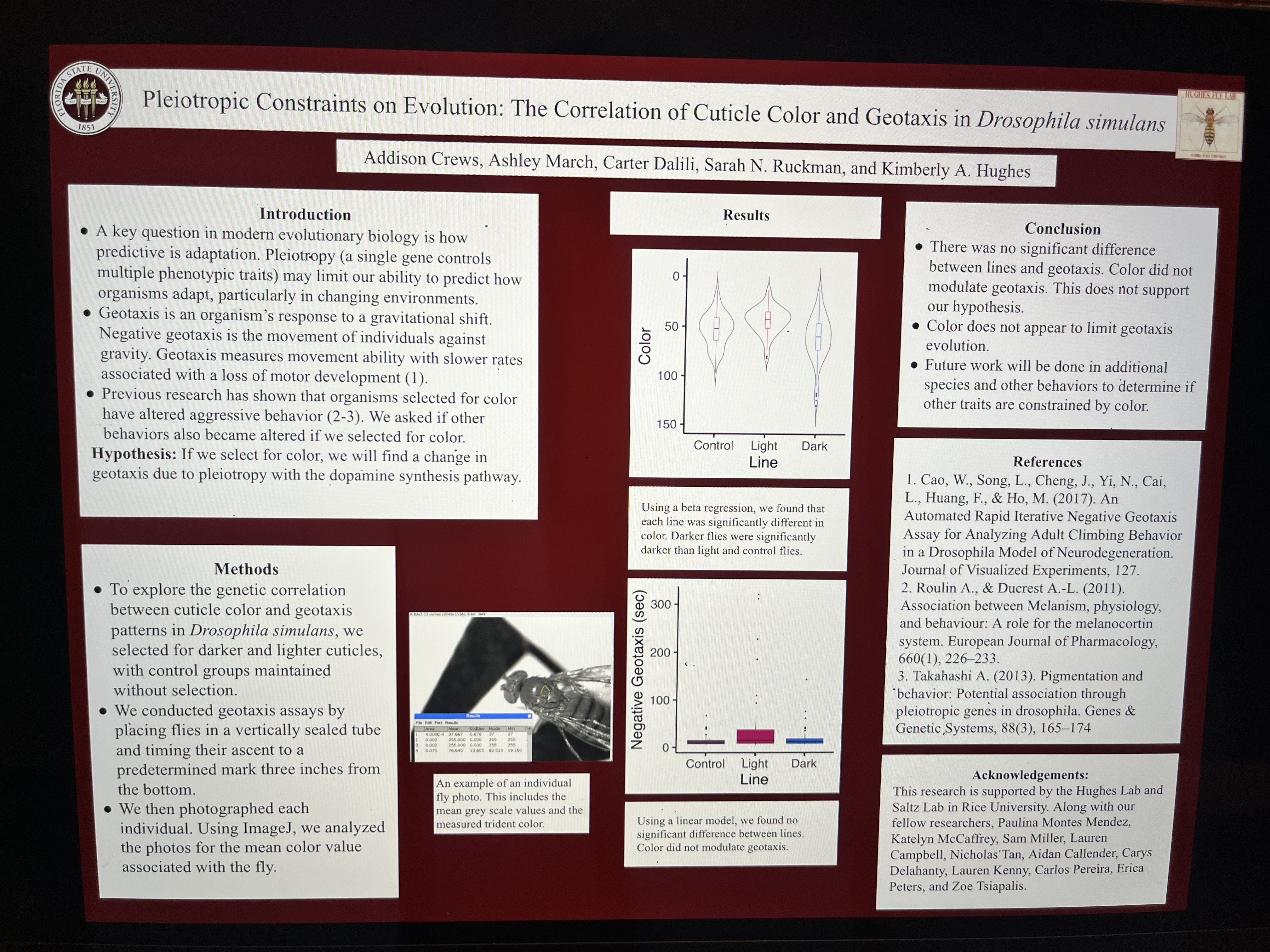Research Symposium
24th annual Undergraduate Research Symposium, April 3, 2024
Carter Dalili Poster Session 1: 9:30 am - 10:30 am /318
BIO
I'm Carter Dalili, a senior Economics major at FSU with a strong passion for the social sciences. However, my academic interests also extend into the realm of biology and biomedical sciences, where I'm actively involved in research. As I approach graduation, I aim to combine my love for science with my career aspirations by pursuing a path in medicine to become a practicing physician.
Pleiotropic Constraints on Evolution: The Correlation of Cuticle Color and Geotaxis in Drosophila simulans
Authors: Carter Dalili, Sarah RuckmanStudent Major: Economics
Mentor: Sarah Ruckman
Mentor's Department: Evolutionary Biology Mentor's College: Biology Co-Presenters:
Abstract
One long standing question in evolutionary biology is whether single genes that control multiple traits (pleiotropy) results in limitations on adaptive evolution. If it does, then our ability to predict adaptation (e.g., in the face of changing environments) is compromised. We are using a much-discussed correlation between body coloration and aggressive behavior as a system to address this question. Having found the predicted genetic correlation between cuticle color and aggressive behavior in Drosophila simulans using artificial selection (unpublished data), we then asked if any other behaviors co-evolved under selection on cuticle color. For example, the dopamine synthesis pathway is plausibly related to color, aggression, and other behaviors, such as geotaxis level. Negative geotaxis is the movement of individuals against gravity. This is a measure for general activity and motor development. Efficiency of geotaxis has been used to measure movement ability, with a slower rate of geotaxis associated with a loss of motor development and neurodegeneration. We therefore measured geotaxis ability of flies (D. simulans) selected for darker and lighter cuticle color. To measure geotaxis, flies are placed in a vertically sealed tube and timed for how quickly they climb to a predetermined mark at 3 inches from the bottom of the tube. Results suggest that time to climb to the top of the tube is faster in the dark-selected lines, suggesting that genetic correlations do constrain the independent evolution of cuticle color and behavior.
Keywords: Pleiotropy Geotaxis Drosophila simulans


